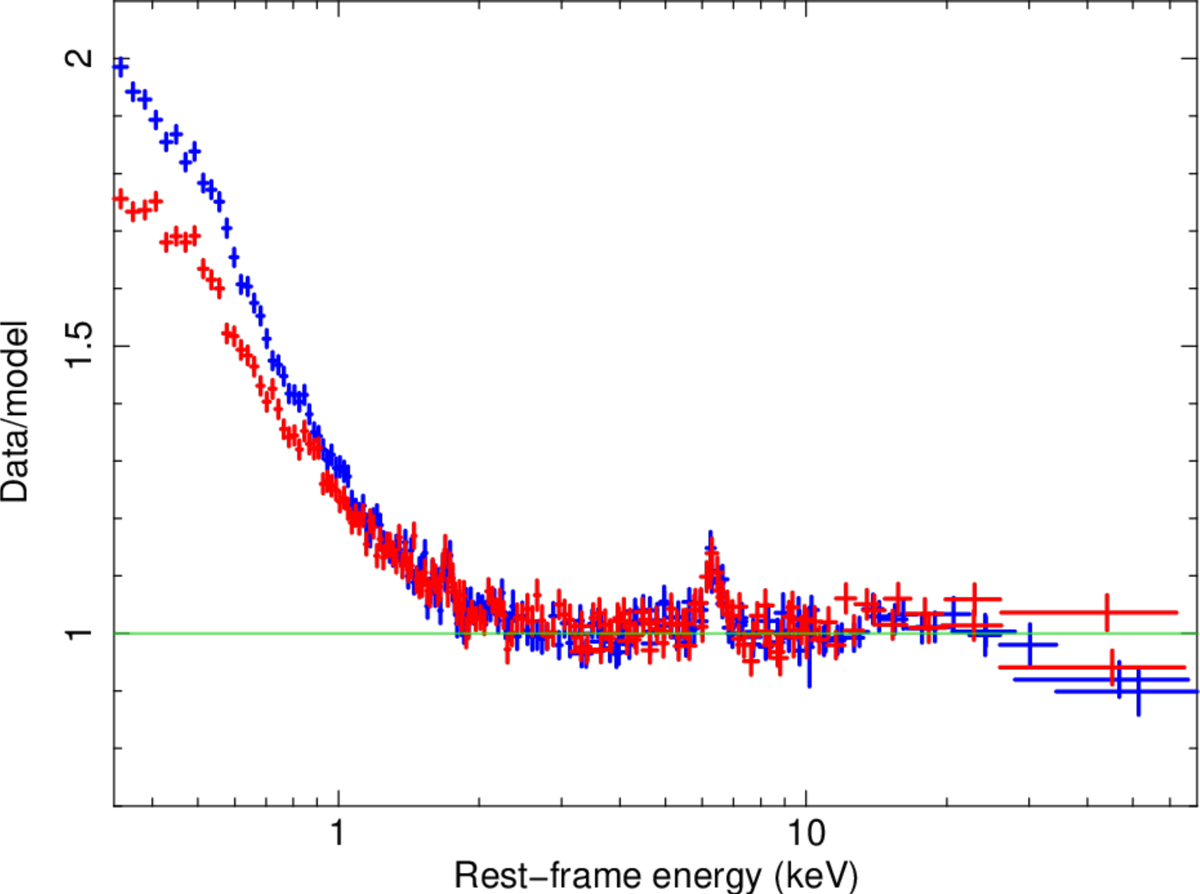Probing the face-on disc-corona system of the bare AGN Mrk 110 from UV to hard X-rays: A moderate changing-state AGN?
Abstract
Context. The X-ray broadband spectra of the bare active galactic nucleus (AGN) Mrk 110, obtained by simultaneous XMM-Newton and NuSTAR observations performed in November 2019 and April 2020, are characterised by the presence of a prominent and absorption-free smooth soft X-ray excess, moderately broad O VII and Fe Kα emission lines, and a lack of a strong Compton hump. The disc-corona system is almost viewed face-on as inferred from the O VII accretion disc lines. While relativistic reflection as the sole emission is ruled out, a simplified combination of soft and hard Comptonisation (using COMPTT) from a warm and a hot corona, plus mild relativistic disc reflection (occuring at a few 10 s Rg) reproduces the data very well.
Aims: We aim to confirm the physical origin of the soft X-ray excess of Mrk 110 and to determine its disc-corona system properties from its energetics using two new sophisticated models: REXCOR and RELAGN, respectively.
Methods: We applied these models to the 0.3-79 keV X-ray broadband spectra and to the spectral energy distribution (SED) from UV to hard X-rays, respectively.
Results: At both epochs, the inferred high values of the warm-corona heating from the X-ray broadband spectral analysis using REXCOR confirm that the soft X-ray excess of Mrk 110 mainly originates from a warm corona rather than relativistic reflection. The intrinsic best-fit SED determined at both epochs using RELAGN show a high X-ray contribution relative to the UV and are very well reproduced by a warm and hot corona plus mild relativistic reflection. The outer radii of the hot and warm corona are located at a few 10 s and ∼100 Rg, respectively. Moreover, combining the inferred low Eddington ratio (approximatively a few percent) from this work, and previous multi-wavelength spectral and timing studies suggest that Mrk 110 could be classified as a moderate changing-state AGN.
Conclusions: Our analysis confirms the existence of a warm corona as a significant contribution to the soft X-ray excess and UV emission in Mrk 110, adding to growing evidence that AGN accretion deviates from standard disc theory. This strengthens the importance of long-term multi-wavelength monitoring on both single targets and large AGN surveys to reveal the real nature of the disc-corona system in AGNs.
- Publication:
-
Astronomy and Astrophysics
- Pub Date:
- January 2024
- DOI:
- 10.1051/0004-6361/202347202
- arXiv:
- arXiv:2310.15002
- Bibcode:
- 2024A&A...681A..40P
- Keywords:
-
- X-rays: individuals: Mrk 110;
- galaxies: active;
- quasars: general;
- radiation mechanisms: general;
- accretion;
- accretion disks;
- Astrophysics - High Energy Astrophysical Phenomena;
- Astrophysics - Astrophysics of Galaxies
- E-Print:
- 12 pages, 7 figures, accepted for publication in A&
